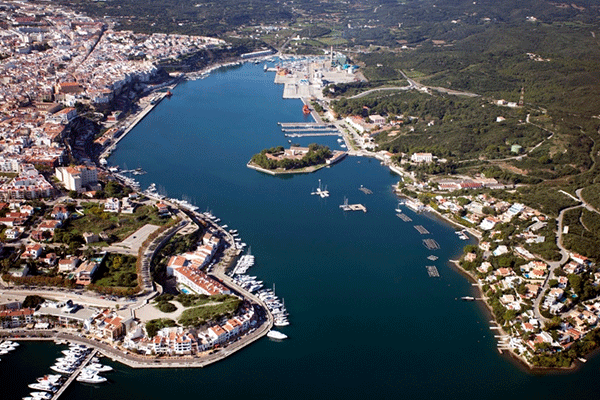FCC Industrial wins the electrical infrastructure contract for the Port of Mahón (Mallorca)

FCC Industrial, in consortium with COMSA, has won the contract to install the electrical infrastructure for connecting ships to the shore power at the Cós Nou docks in the Port of Mahón (Mallorca).
The project has a budget of 3.5 million euros and a completion period of nine months.
This project complies with European regulations that require seaports to provide for the availability of clean alternative fuels, as electricity in port can help reduce environmental impact. OPS or ‘Onshore Power Supply’ (also called ‘Cold Ironing’) basically consists of connecting ships to the land-based electricity grid during their stay in port, so that the auxiliary engines they currently use to supply themselves (in order to keep their transfer pumps, refrigeration systems, lighting, emergency equipment, etc. running) can be kept switched off during their stay in port, thus avoiding sources of noise and pollution near population centres.
Replacing energy generated on board with energy generated on land considerably reduces polluting emissions, as well as eliminating the noise and vibrations produced by auxiliary engines. This has a positive impact on the environment, improving the quality of life of the populations near the port.
When in port, ferries use their auxiliary engines to produce electricity during loading, unloading and parking operations, with the consequent emission of polluting gases and production of noise and vibrations.
One of the ways to reduce the environmental impact of ships is to supply them with electricity from the national grid. The use of electrical power from the national grid means a reduction in the emissions produced by the ship, given that the emission factor per MWh of the generators of the national grid is much lower than that of the auxiliary engines of the ship, and also allows the ship's own generators to remain switched off, avoiding the generation of noise and vibrations.
Furthermore, the system will reduce emissions of sulphur dioxide (SO2), nitrous oxides (NOx), primary particles (PM), volatile organic compounds (VOC), carbon dioxide (CO2) and ozone-depleting substances in port.








